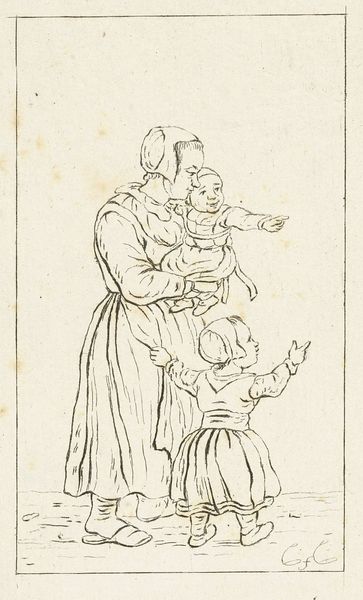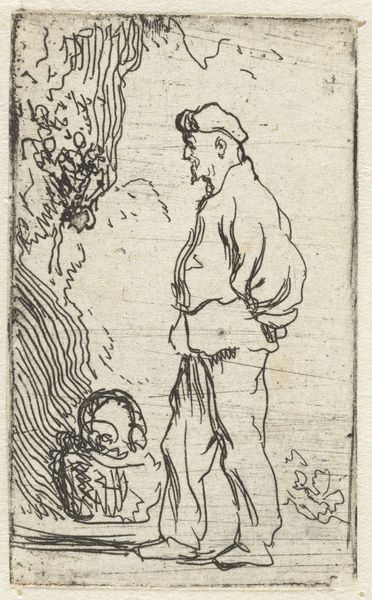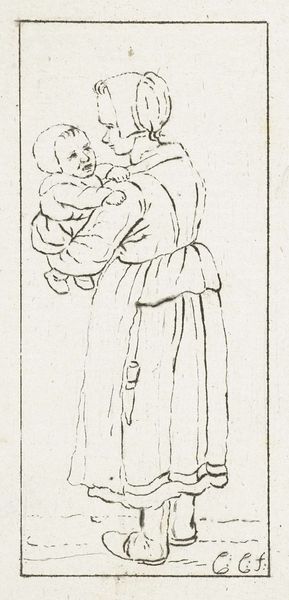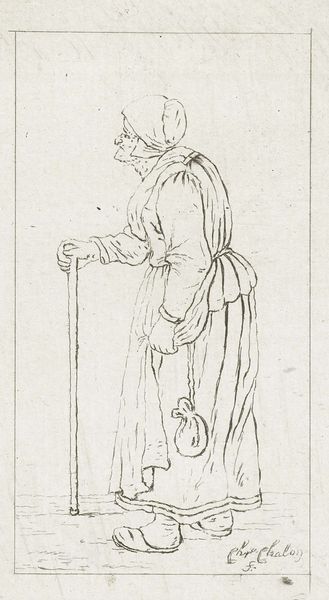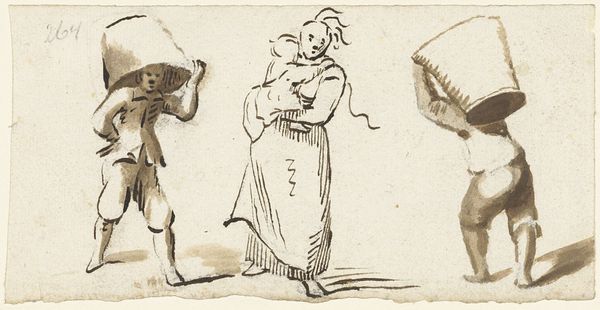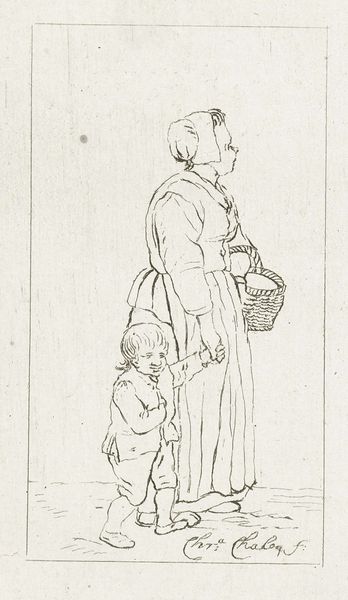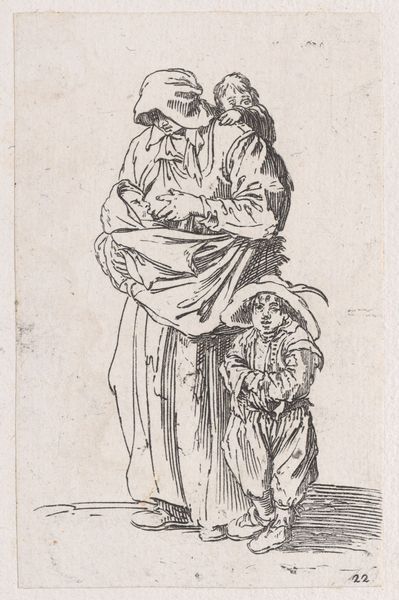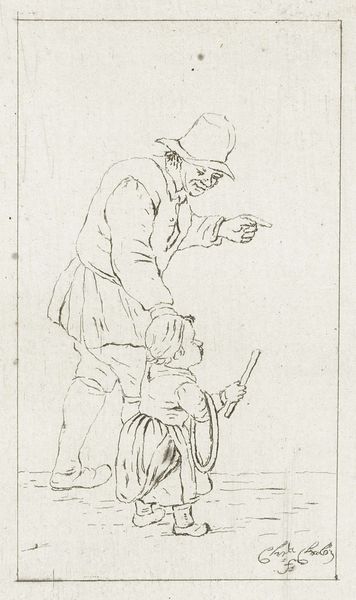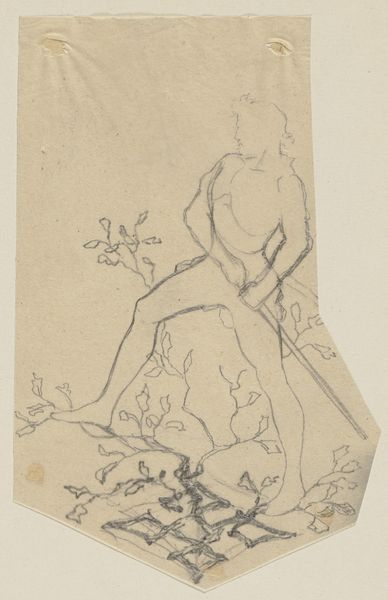
drawing, paper, ink
#
portrait
#
drawing
#
neoclacissism
#
figuration
#
paper
#
ink
#
genre-painting
Dimensions: height 124 mm, width 80 mm
Copyright: Rijks Museum: Open Domain
Curator: I'm immediately struck by the stark simplicity of this sketch. It possesses a quiet, unassuming quality in its unadorned line work. Editor: Indeed. What we are viewing is a work entitled "Standing Man with Child on a Leash" by Pieter de Mare, created between 1777 and 1779. It’s an ink drawing on paper, a medium common for studies during the rise of Neoclassicism. Curator: The leash connecting the man and child is a potent signifier. There's a direct linkage between control and innocence—the father’s, likely, controlling nature balanced by the child's reach. The rendering emphasizes the geometry of the subjects as well, particularly how the top hat repeats in a smaller scale in the child’s bonnet. Editor: Considering the period and genre painting classification, one can infer commentary on societal norms, and perhaps, expectations around domesticity and public persona. A common scene is given some formal interest due to its composition; the diagonal lean, the large expanses of bare paper around each figure. Curator: Notice also the direction of their feet, placed carefully at 45-degree angles. It could symbolize not only physical progression, but also their positions within a given social strata. De Mare highlights the spatial relationships and balance of the subjects within a seemingly limited medium. Editor: Or perhaps, in its unrefined quality, it critiques that very strata, demonstrating the inherent burdens of those class expectations, where the labor of maintaining standards requires harnessing even children into the effort. The child, after all, strains at the leash as much as her limited possibilities strains against her will. Curator: Interesting… In this rendering, it shows a delicate interpretation in the linework used for fabric compared to skin. Almost like different value weights could provide insight, or perhaps separate different layers of experience represented within our subjects. The interplay could signify distinct relationships, the tangible with intangible. Editor: Viewing this drawing, I appreciate its contribution to discussions around 18th-century social customs and artistic practice, while you are more invested in the language of this as image alone. Curator: In either event, I am happy we engaged with the subtle composition present in “Standing Man with Child on a Leash," whether you are responding to it from art history or considering from formalism, it proves this is an image we can still examine anew.
Comments
No comments
Be the first to comment and join the conversation on the ultimate creative platform.
